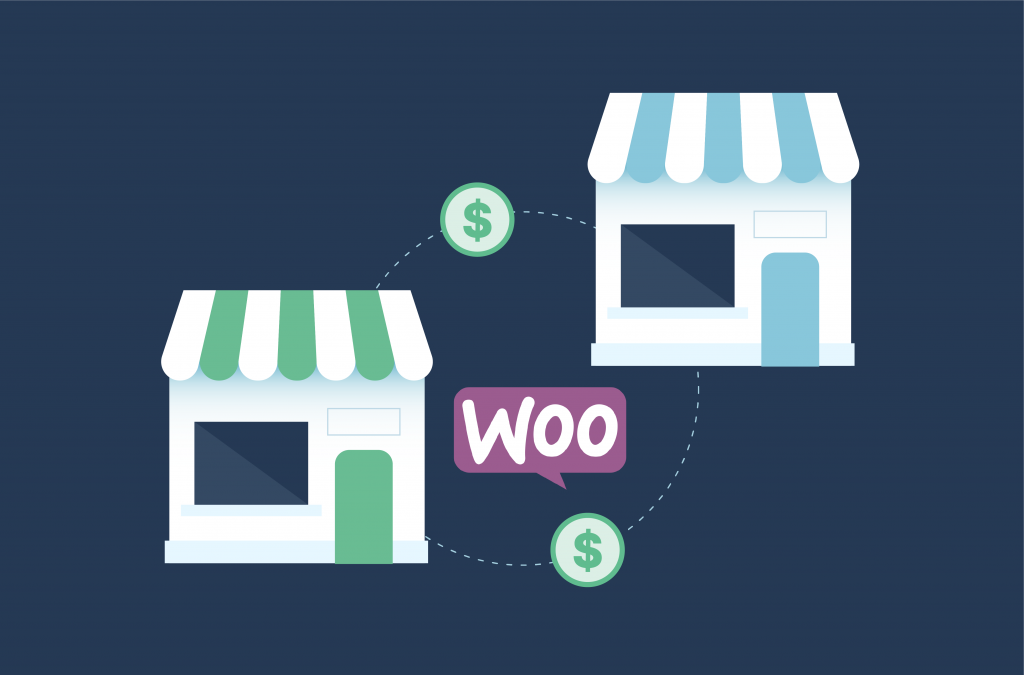In the dynamic world of online commerce, WooCommerce stands out as a versatile tool, especially for businesses engaged in B2B sales. As a WooCommerce user, you’re already acquainted with its robust framework and customizable nature. However, the journey from using WooCommerce as a basic e-commerce solution to leveraging its full potential for B2B transactions can be both challenging and rewarding.
This article delves into advanced strategies and tools within WooCommerce that are specifically beneficial for B2B sales. We will explore how to refine your platform to cater to the unique demands of business clients, from implementing sophisticated pricing models to streamlining the order and fulfillment processes.
By the end of this article, you will be equipped with the knowledge and tools to transform your WooCommerce platform into a powerhouse for B2B sales, ready to meet and exceed the expectations of your business clients.
Setting Up WooCommerce for B2B Sales

Believe it or not, WooCommerce is a great solution for B2B businesses. But first, you’ll need to properly configure WooCommerce for B2B sales to leverage its full potential in a business-to-business context. This involves more than just the initial installation; it requires thoughtful customization to meet the specific needs of business clients.
1. Basic Setup and Configuration
Begin by ensuring your WooCommerce store is optimized for B2B transactions:
- Selecting a B2B-friendly theme: Choose a theme that suits the more pragmatic and functionality-driven approach of B2B buyers. This theme should be efficient, professional, and easily navigable.
- Streamlining Navigation and Search: B2B customers often know exactly what they need, so having an efficient search system and a straightforward navigation menu is crucial. This ensures they can find products or information quickly and efficiently.
2. Customizing user roles and permissions
In a B2B environment, controlling what different users can see and do is crucial:
- Defining B2B user roles: Set up specific user roles such as ‘Wholesale Buyer‘, ‘Retail Distributor’, or ‘Corporate Client’. This allows for a tailored approach to each group’s needs and buying behaviors.
- Personalizing access based on roles: Different user roles should have access to different pricing, products, and order capabilities. This level of personalization enhances the shopping experience for B2B clients.
- Enhancing security measures: Implement security features such as limiting user login attempts. This step is vital in protecting sensitive business information and maintaining the trust of your B2B clients.
3. Efficient checkout process for B2B transactions
Optimizing the checkout process for B2B customers is essential:
- Streamlining bulk orders: Ensure that your system can handle bulk orders efficiently, which are common in B2B transactions. Consider features like quick order forms and easy-repeat orders.
- Flexible payment options: B2B transactions often require different payment methods compared to B2C. Include options like net terms, purchase orders, and direct bank transfers.
By focusing on these foundational aspects of setting up WooCommerce for B2B sales, you create a solid base that supports complex business transactions. This preparation paves the way for detailed product management and advanced sales strategies that are crucial in B2B e-commerce, which will be explored in the following sections.
Product management in B2B eCommerce
Understanding the nuances of B2B purchasing behavior is critical. Unlike individual consumers, business clients often place orders in bulk, require detailed product specifications, and expect a level of customization in their transactions. WooCommerce, with its flexible platform, allows you to cater to these specific needs efficiently.
The first step is to ensure your product listings are comprehensive and informative. B2B buyers make decisions based on detailed product information, so it’s essential to provide as much data as possible. This can include technical specifications, bulk pricing options, availability, and even customizable features if applicable. High-quality images and videos can also be very effective in providing a clear understanding of your products.
Additionally, consider the organization of your products. Since B2B buyers typically know what they’re looking for, your products should be filtered by category logically, making them easy to find. You might also want to implement features like advanced filtering, which allows clients to sort products based on specific criteria.
Another critical aspect is pricing strategy. In B2B transactions, pricing can often be complex, with product variables being priced differently, volume discounts, customer-specific pricing, and negotiated contracts. WooCommerce’s flexibility allows you to implement various pricing strategies. You can set up tiered pricing models, offer discounts on bulk purchases, or even negotiate pricing for specific clients.
Also, think about the purchasing process from your customer’s perspective. Integrating features that streamline bulk orders, like quick order forms or the ability to repeat previous orders, can significantly enhance the buying experience. Remember, the easier you make it for businesses to purchase from you, the more likely they are to return.
Lastly, keeping an eye on stock levels and managing inventory efficiently is crucial in B2B sales, where orders are often larger and more frequent. Utilizing WooCommerce’s inventory management tools can help you keep track of stock levels, manage backorders, and prevent stockouts.
Pricing and discount strategies in WooCommerce for B2B sales
In a B2B context, your pricing strategy must account for various factors such as bulk orders, long-term customer relationships, and varying levels of demand. WooCommerce provides the tools necessary to implement such diverse pricing strategies. The key is to use these tools to create a pricing structure that not only attracts B2B buyers but also maintains profitability.
Volume-based pricing is a common strategy in B2B sales. This involves reducing the unit price of products as the quantity purchased increases, and it’s often presented in a clear pricing table format. It’s an effective method to encourage larger orders, which is a typical purchasing pattern among B2B clients. WooCommerce allows you to set up these tiered pricing structures easily, offering discounts on higher quantities.
Another aspect to consider is negotiated pricing. B2B transactions often involve price negotiations, resulting in unique pricing for different clients. WooCommerce can be configured to support this, allowing for custom pricing for specific customers or customer groups. This feature is particularly useful for maintaining long-term business relationships, as it offers a personalized shopping experience.
Similarly, offering exclusive discounts to repeat customers or members of specific business groups can foster loyalty and encourage recurring business. These discounts can be applied automatically based on customer profiles or purchase history, making the process seamless and efficient.
Seasonal or time-limited promotions can also be effective in the B2B domain. WooCommerce enables you to run these promotions, offering special pricing for a limited time, which can be a powerful tool to boost sales during slow periods or to move excess stock.
Lastly, it’s important to consider the integration of B2B-specific plugins that can handle complex pricing scenarios. These plugins can offer advanced capabilities like setting minimum order amounts, creating custom pricing rules, and managing wholesale pricing tiers.
Order management and fulfillment in WooCommerce for B2B
For B2B transactions, where orders tend to be larger and more complex, having a system that can efficiently handle order processing is crucial. WooCommerce allows for the automation of various stages of the order process. This includes confirmation emails, packing slip generation, order tracking, and status updates, which keep clients informed throughout the fulfillment process.
In terms of order fulfillment, WooCommerce can be integrated with various shipping and logistics plugins. These integrations facilitate the handling of large orders and complex shipping requirements and variations, such as weight-based shipping, which are common in B2B transactions. The ability to track shipments, provide accurate delivery estimates, and manage logistics in real-time is vital for maintaining the trust and satisfaction of B2B customers.
Inventory management is also an integral part of the order fulfillment process. Keeping accurate track of stock levels is crucial to avoid overselling, especially when dealing with bulk orders. WooCommerce’s inventory management tools can help in tracking stock levels, setting up alerts for low stock, and managing backorders efficiently.
Another important aspect is the handling of returns and exchanges, which can be more frequent in B2B transactions due to the large volumes involved. Setting up a clear and efficient process for returns and exchanges in WooCommerce will help maintain customer satisfaction and trust.
Finally, integrating ERP systems with WooCommerce can significantly improve the efficiency of order management and fulfillment. This integration allows for the seamless flow of information between WooCommerce and your business’s core operational systems, ensuring that every aspect of the order process is managed effectively and accurately.
Taxation and compliance in WooCommerce for B2B sales

Navigating the complexities of taxation and compliance is a critical aspect of B2B eCommerce. For businesses using WooCommerce, it’s essential to ensure that all transactions comply with tax laws and regulations, which can vary greatly depending on location and the nature of the products or services sold.
WooCommerce provides functionalities and integrations to help manage taxes effectively. Setting up tax rates can be done within WooCommerce, allowing for different tax rates based on geographical locations. This is particularly important for B2B transactions, as businesses often deal with clients across various states or even countries, each with its own tax regulations.
One key feature to leverage in WooCommerce is automated tax calculation. By integrating with tax calculation plugins, WooCommerce can automatically calculate the correct amount of tax based on the customer’s location and the nature of the product or service. This automation reduces the risk of errors and ensures compliance with local tax laws. Additionally, you can customize the invoice templates to create custom invoices that align with your business’s branding and professionalism.
For businesses operating internationally, understanding and complying with tax regulations like VAT in Europe or GST in Australia is crucial. WooCommerce can be configured to handle these requirements, ensuring that your store complies with international tax laws.
Moreover, WooCommerce allows for the customization of tax reports, which can be invaluable for accounting and auditing purposes. Regularly reviewing these reports helps in maintaining accurate financial records and ensuring compliance.
In addition to tax management, compliance with other regulations, such as data protection laws (like GDPR in Europe), is also essential. WooCommerce offers tools and plugins, including invoice plugins, to help ensure that your store is compliant with these regulations, protecting both your business and your customers’ data.
Marketing and sales strategies for WooCommerce in B2B
One powerful approach in B2B marketing is content marketing. Creating valuable, informative content that addresses the specific needs and challenges of your B2B audience can position your brand as a thought leader and build trust. WooCommerce can support content marketing efforts by integrating with blogging platforms or enabling on-site content publication.
Whatever content you write for publishing on various platforms, it should be reviewed to ensure that it serves the dual purpose of providing value to your audience and driving potential customers through the sale funnel. For a collaborative approach, you could create a shared Google document or use MultiCollab, an advanced content collaboration plugin.
Email marketing remains a crucial tool in B2B. With WooCommerce, you can segment your email lists based on various criteria like past purchases, industry, or position in the sales funnel, allowing for highly targeted and personalized email campaigns. Automated email workflows can be set up to nurture B2B leads, follow up on inquiries, and keep your business top-of-mind with potential clients.
Social media marketing can also be effective, particularly on platforms frequented by professionals, such as LinkedIn. WooCommerce can integrate with social media platforms, enabling you to track the performance of your social media campaigns and understand how they contribute to your sales objectives.
Webinars have become a staple in B2B marketing, and creating an evergreen webinar can be a valuable asset. An evergreen webinar is a pre-recorded webinar that remains relevant over time and can be accessed by clients at their convenience. This tool can be used for product demonstrations, training, or sharing industry insights, providing ongoing value to prospects and clients.
In terms of sales strategies, focusing on building long-term relationships is key in B2B. WooCommerce can aid in this by providing detailed customer profiles and purchase histories, enabling personalized outreach, and offering tailored solutions based on past interactions.
Additionally, leveraging upselling and cross-selling techniques within WooCommerce can increase the average order value. By suggesting related products or upgrades that could benefit the business customer, you not only boost sales but also enhance the customer experience.
Finally, tracking and analyzing sales data through WooCommerce’s analytics features is crucial for refining your marketing and sales strategies. Understanding customer behavior, identifying trends, and measuring the ROI of various campaigns enables informed decision-making and strategy adjustments.
Analytics and reporting in WooCommerce for B2B

For any B2B business, understanding and effectively utilizing analytics and reporting is crucial for strategic decision-making. WooCommerce offers a range of analytics and reporting features that can be instrumental in gaining insights into customer behavior, sales trends, and overall business performance.
The core analytics in WooCommerce provide a comprehensive overview of key performance indicators such as sales figures, customer acquisition, and product performance. These insights are vital for understanding the health of your B2B operations. For instance, tracking sales over time can help identify trends and seasonal variations, enabling more accurate forecasting and inventory management.
In-depth customer analysis is another critical aspect. WooCommerce can help track customer behavior, including purchase history, frequency, and preferences. This data is invaluable for creating targeted marketing campaigns, personalizing the customer experience, and identifying opportunities for upselling or cross-selling.
Inventory management is a significant challenge in B2B, and WooCommerce analytics can assist in this area as well. By analyzing product performance and stock levels, you can make informed decisions about inventory replenishment, manage stock more efficiently, and reduce the risk of overstocking or stockouts.
Another key area is the analysis of website traffic and user engagement. Understanding how users interact with your site can provide insights into areas for improvement. For example, identifying pages with high exit rates might indicate a need for better content or a more user-friendly layout.
Furthermore, WooCommerce allows for the integration of external analytics tools like Google Analytics. This can provide a more granular view of website performance, including detailed user behavior analytics, traffic sources, and conversion tracking. Such integrations can be particularly useful in understanding the effectiveness of marketing campaigns and SEO efforts.
Custom reporting is also a feature that can be leveraged in WooCommerce. Tailoring reports to focus on specific aspects of your business, such as regional sales performance or the success rate of different sales channels, can provide more relevant insights for strategic planning.
Last but not least, regularly reviewing and analyzing these reports and analytics can help in identifying areas for improvement, discovering new business opportunities, and making data-driven decisions to optimize your B2B sales strategies.
Conclusion
In the ever-evolving world of B2B eCommerce, WooCommerce emerges as a powerful ally for businesses seeking to optimize their online sales efforts. This article has explored various strategies and tools to harness the full potential of WooCommerce for B2B sales, with a focus on practical implementation.
As a WooCommerce user, you are already equipped with a robust eCommerce platform. By customizing it to cater specifically to B2B clients, you can unlock a world of opportunities.
Remember, success in B2B eCommerce is not just about selling products; it’s about building long-term relationships, providing value, and being a reliable partner to your clients. By continuously refining your WooCommerce strategy and embracing innovation, you can position your business for sustainable growth and prosperity in the B2B arena.


